As responsible travelers evolve, so do the stories we share.
This article is part of our living archive — trusted content we continue to care for.
First published on February 14, 2022 • Last updated on April 22, 2022.
Hotsprings and birdwatching in Papallacta, Ecuador? Yes, it is possible to do both!
Most people make the day trip from Quito to Papallacta to enjoy the hot springs alone. Then there are those of us who go for the birds! With that in mind, here are a few locations in and around Papallacta, Ecuador that make for great birdwatching!
Birdwatching in Papallacta: The Hot Springs
Birds dot the grounds of Las Termas de Papallacta! You don’t even need to hike one of the trails. We’ve observed Green Trainbearers and Shining Sunbeam hummingbirds in bushes right next to the parking lot!
So imagine what birds await you a short distance away. Consider hiking the trails right along the river where you can spot birds and flowering orchids in equal measure.
You might spot other hummingbirds like the Tyrian Metal-tail, the Shining Sunbeam, and the Buff-winged Starfrontlet. Additionally, shy birds like the Pale-naped Brushfinch and colorful birds like the Scarlet-bellied Mountain-Tanager, call these cloud forests home.
Read more about the Papallacta Hotsprings
For the most recent sightings, check out the birdwatching list for the Papallacta Hot Springs on E-bird.

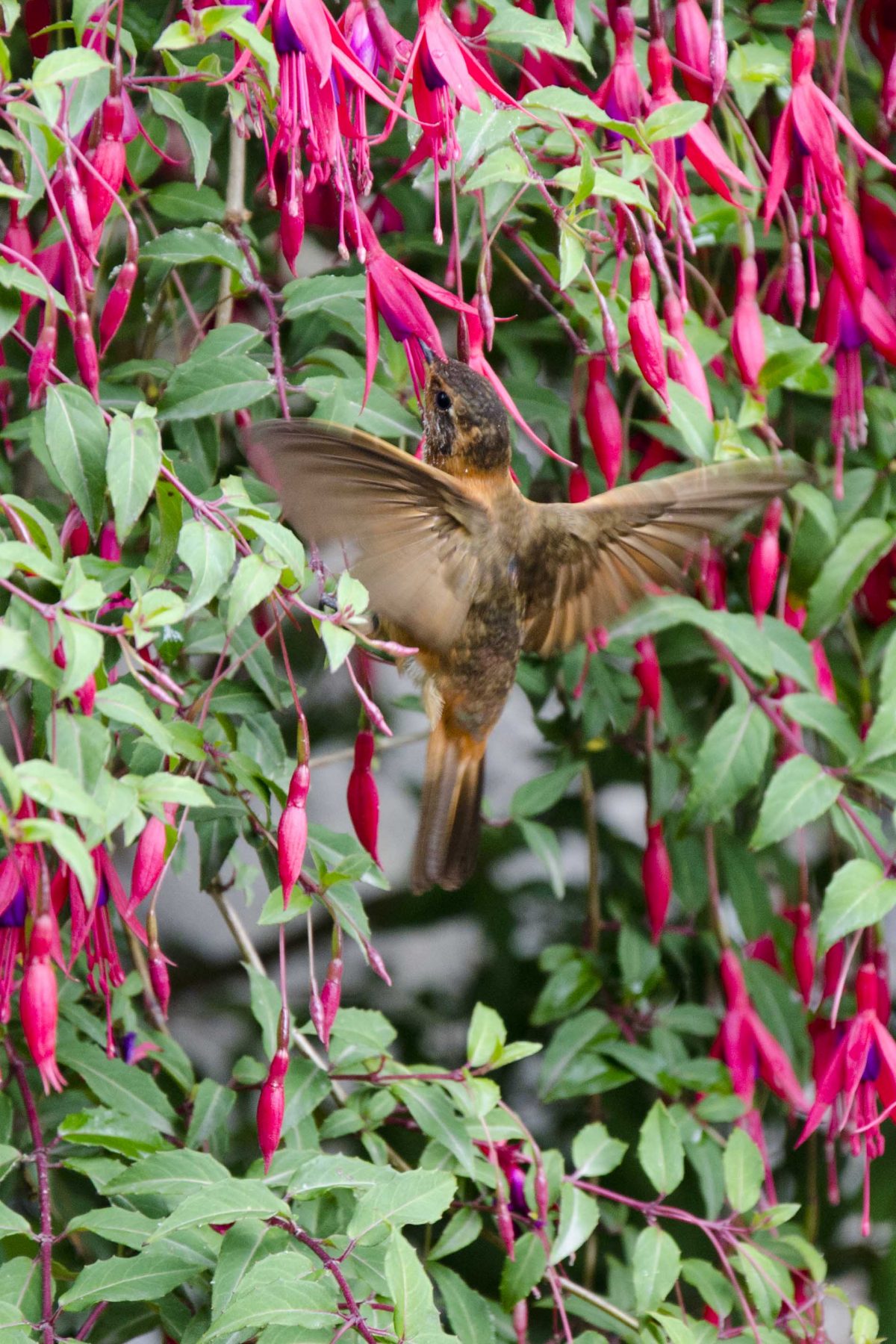
Visit the Nearby Cayambe-Coca National Park
A little further up the road from Las Termas de Papallacta is the stunning Cayambe-Coca National Park. Shrouded in clouds for most of the year, this mysterious landscape is home to the Tawny Breasted Antpitta, the Blue-backed Conebill, the Glowing Puffleg (still on my must-see list!), and the iconic Sword-billed Hummingbird.

While there are birds to be seen along the entire road leading up to the park, some of the most iconic are best seen near the ranger station and along the trails inside the park grounds. My favorite bird from this region so far is the Masked Mountain-Tanager seen in the picture below!
Make sure to read our article on Cayambe-Coca National Park to know what to expect!
For an up-to-date birdwatching list for the Cayambe-Coca Access Road in Papallacta, check out this E-bird list.
Birdwatching the Papallacta Antennas
Another spot for birdwatching in Papallacta is a place I have yet to visit but have on my list for our next trip, the Papallacta Antennas, another access point to the Cayambe-Coca National Park. You’ll note in the picture below that the antennas are located on slope with a gorgeous view of Antisana (on a clear day!) so the hike alone is worth a visit.
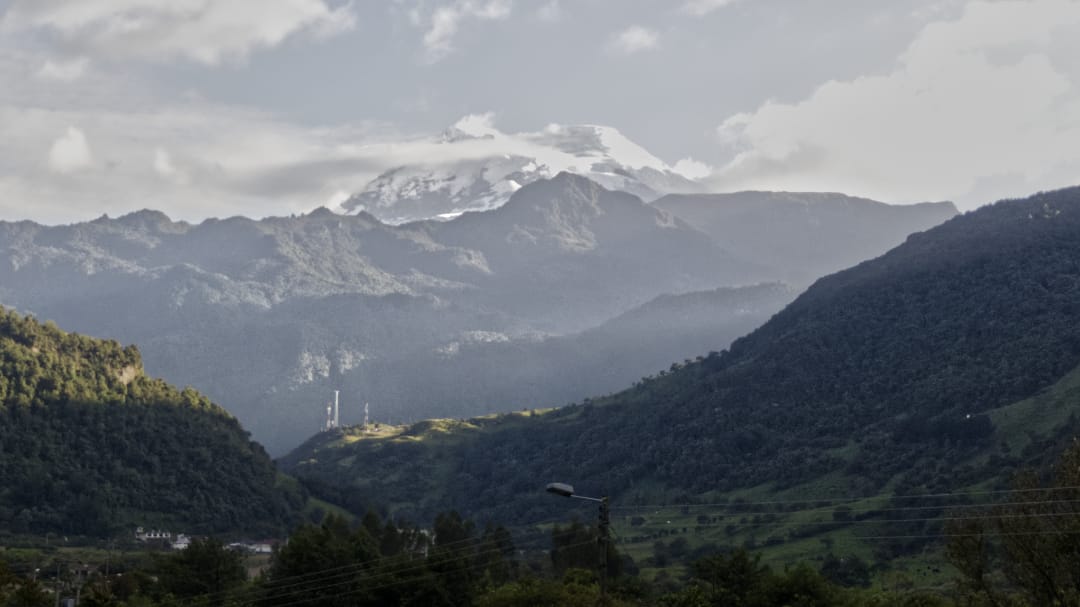
The access point to reach the Papallacta Antennas is near Papallacta Lake just off the main highway. To make sure you reach the right spot, check out this trail map or contact us about going with a guide.
This place is popular with birdwatchers because it is home to several different high altitude hummingbirds like the Ecuadorian Hillstar, the Rainbow Thornbill, and the Blue-manteled Thornbill. Other great birds to spot include the Rufous-bellied Seedsnipe, the Red-crested Cotinga, and the Black-backed Bush Tanager. For a more complete list, check out eBird.
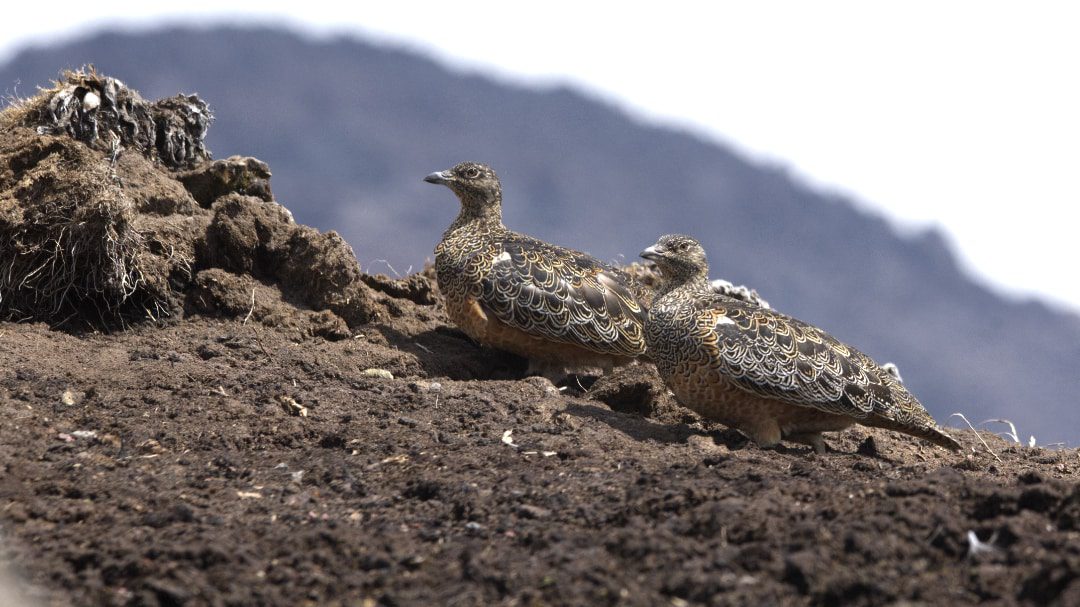
Birdwatching at Guango Lodge
Since Guango Lodge is only about 10 kilometers from the town of Papallacta, it is possible to arrive from Quito in the early morning, bird to your heart’s content and then head to the hot springs for an afternoon of soaking. Lunch can be at Guango or in Papallacta! Just make sure to make your lunch arrangements with Guango BEFORE you arrive.
Also, plan plenty of time for sitting in the hummingbird garden. There, you will have the opportunity to see about a dozen different species, many of them visiting native flowering plants as well as the sugar feeders.
Guango is also a great place to use as a home-base for exploring the area around Papallacta. It is close enough for a taxi ride to the famous hot springs but small enough to feel like an escape from large crowds.
In fact, I can almost guarantee that your small group would be the only ones using the hiking trails for the vast majority of the year. If you’re lucky, you might arrive on a day when the forested trail near the river is full of Masked Trogons in full mating furor. They take over the trees on both sides of the river! If not, there are still another 277 species to see!
Learn More About Day-tripping to Guango Lodge
If you would like us to add a place for birdwatching in Papallacta, please feel free to reach out! We are always looking for new places to visit on our next trip and love learning about opportunities that our clients would love.

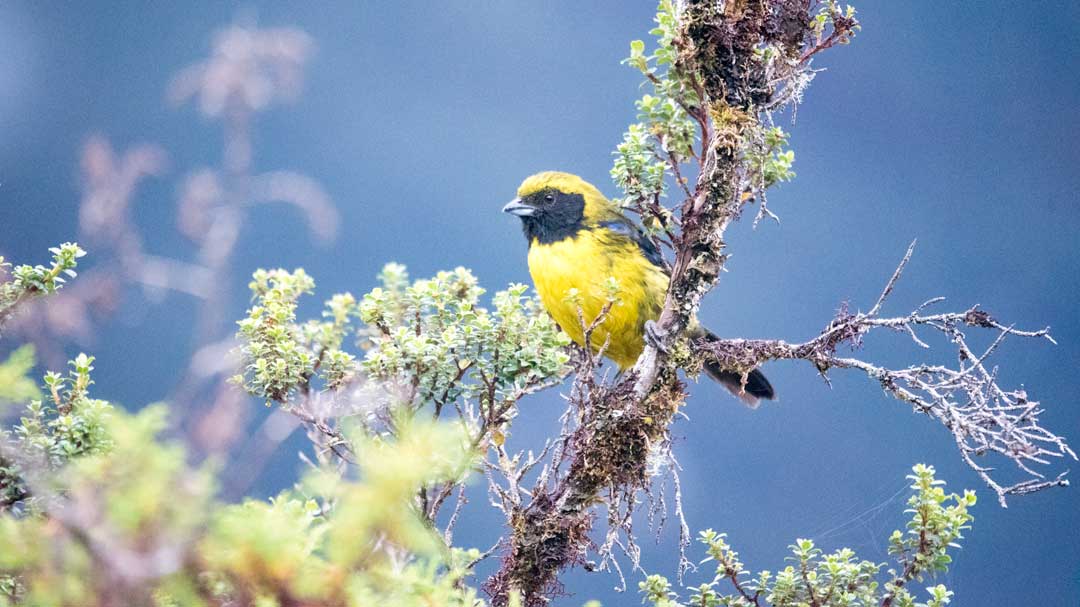


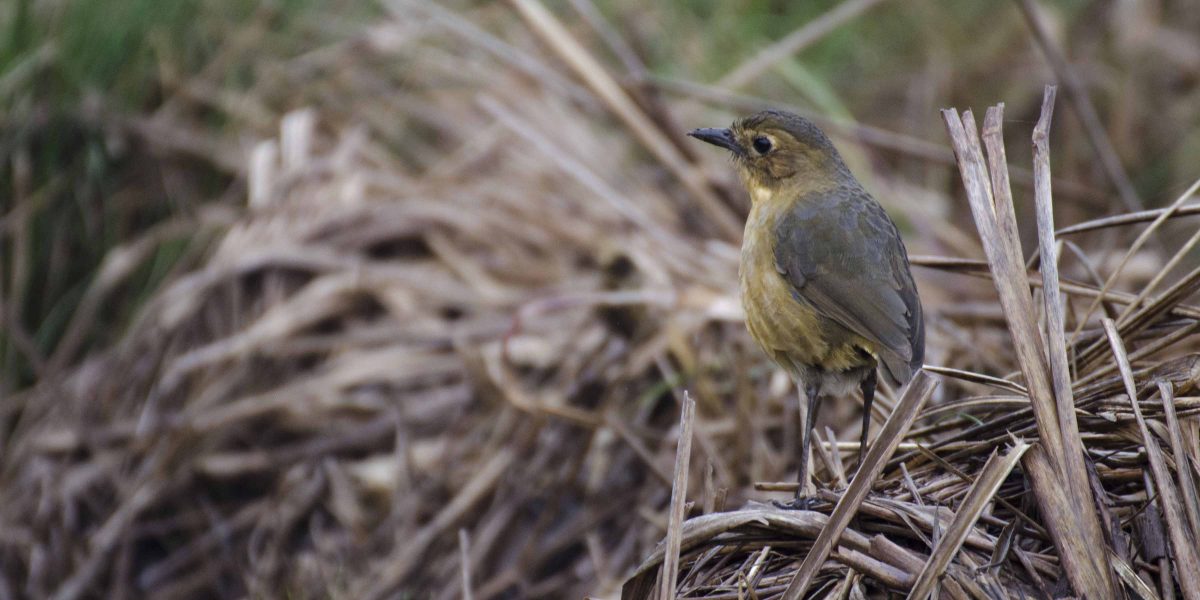
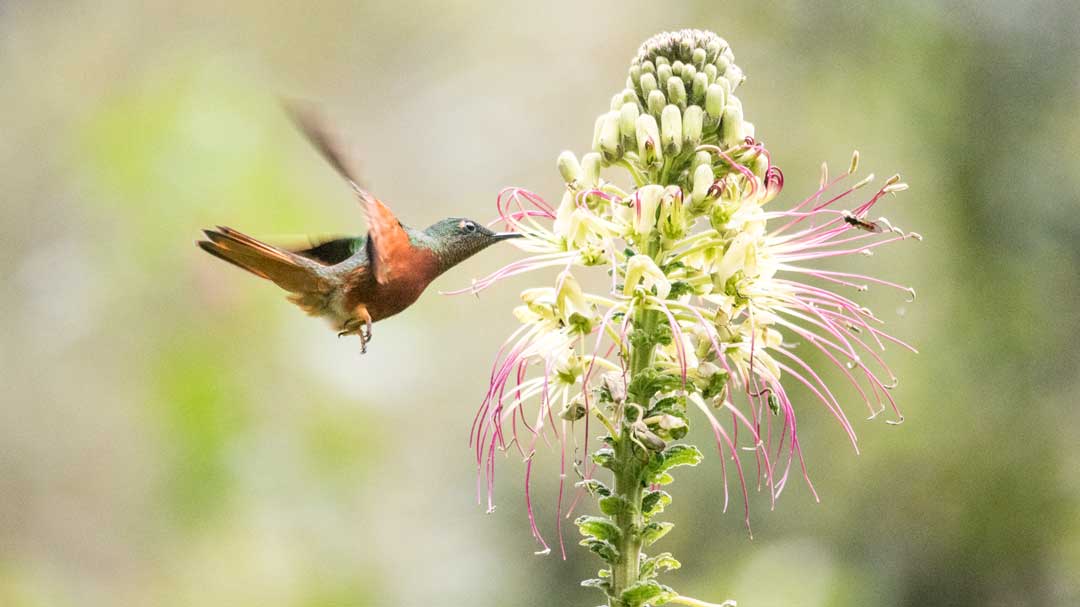
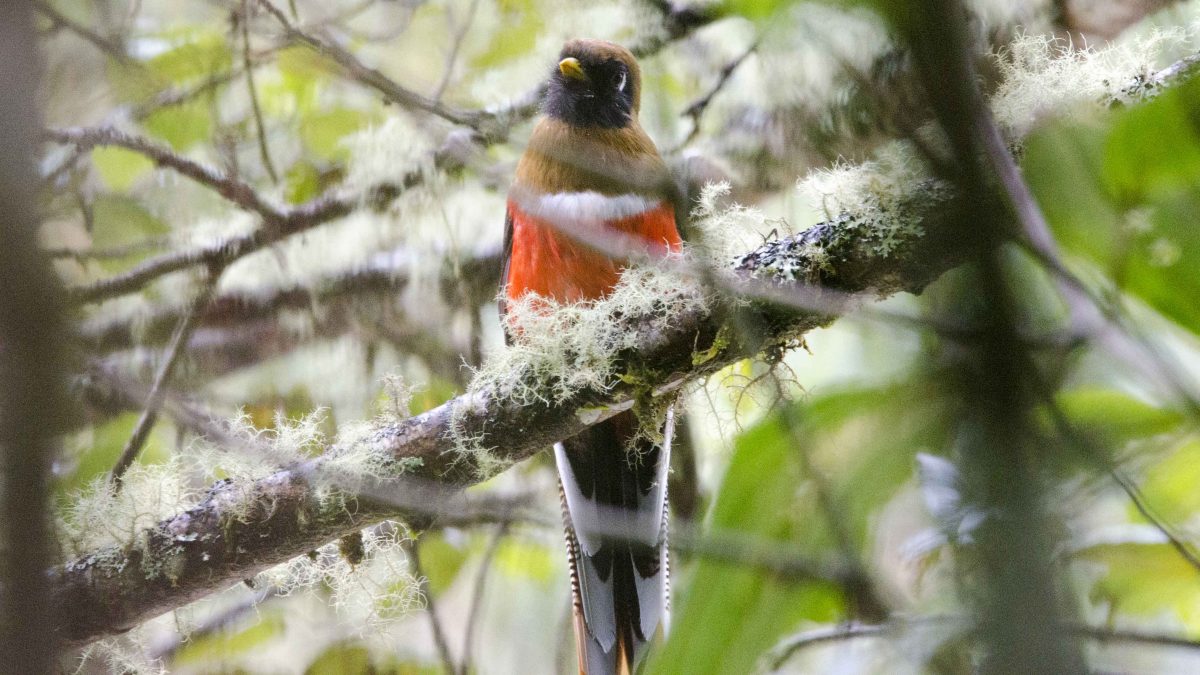
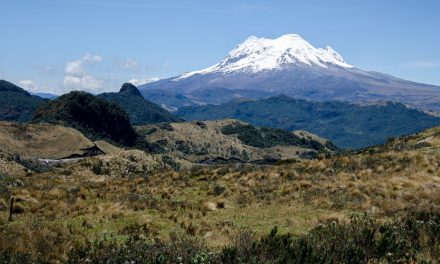

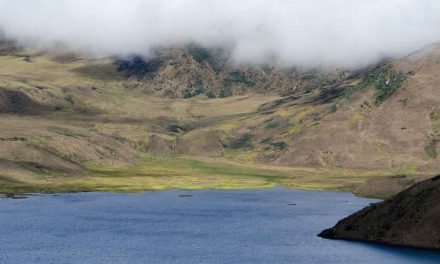
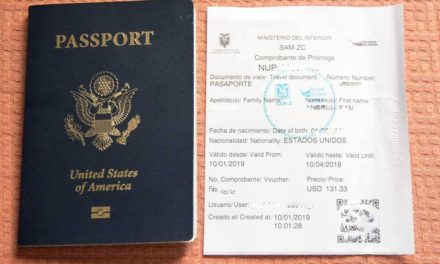

















Excellent photos! I hope to do some bird photography when we are in Ecuador. I would like to know what equipment and settings you used for these.
Thank you for sharing! Jerry A.
My go to camera is a Nikon 7000D. For birding, I use a 70-300mm Tamron lens and have been happy with it. I use a manual focus, not automatic, as the lens doesn’t like to focus on birds. I should probably play around more with my Nikon settings for faster birds as I can change the focus priority but this method works really well for perched birds and gets me some interesting effects for others.
Because birding in Ecuador often takes place in the cloud forest or jungle, conditions can be dark. The photos in this post all used ISO800 but I have pushed higher for some dark days. I keep my aperture as wide open as possible but for some reason I used an f/9 on this day. I have a feeling since these are all early morning shots, I forgot to check my aperture from the night before when I was taking pictures of mountains. Normally I use about an f/5 at 300mm. My husband uses a dedicated 300mm that has a fixed aperture of f/2 and allows him much more light but the lens is so heavy that I find I can’t use it for an all day birding event. If you have the strength in your hand and really want good bird shots in darker conditions, it may be worth it to invest in such a lens. Basically the more light you can allow, the faster the shutter speed and the better for birds that move!
Hope all this helps. And I hope you enjoy Ecuador as much as we do! Thanks for leaving a comment and for asking a question. Commenters like you make it easier to sit down and write everyday.
Thanks for the information AngelaJean. I have a D7100 which replaced my original D100, and have the new 18 – 300 zoom which goes to f3.5. I was able to get good photos of birds in a sanctuary at a hostel where we stayed in Salinas in August. However, they were macaws, toucans and parrots which are much larger and slower than hummers. We have quite a number of local hummingbird species in the Southern California desert where we live, and I think I’ll have to practice on them before trying more serious photography in EC.
Where do you and your husband live? We have been to Cuenca, Cotacachi, Loja, Vilcabamba, Salinas and the Montanita area. We have several friends in Cuenca and one in Salinas; plan to be back sometime in 2015. Haven’t made it to Amazonia yet – maybe next trip!
We live in Quito and travel mainly in the north as our travel time is limited by my husband’s job. Cuenca and Loja are on our list for this Christmas. We love Cotacachi and hope to go again soon. Salinas is also beautiful… I’ve been once and would love to go again! In fact, there are very few places in Ecuador I wouldn’t visit a second time.
If you want birds on your Amazonia trip, make sure to choose a trip based around them. We had a wonderful time at the Huaorani Lodge but birds were not the high point. They could have been with a different guide and a different pace of hiking and the company now realizes that they should ask their guests those kinds of questions before arriving. They plan on matching guides to guests in a different way in the future. The birds there could be spectacular. We saw some very interesting species in the few days we were there by sheer luck and I imagine with a good birding guide, we would have seen tons more.
And practice, practice, practice with those hummingbirds! Especially on cloudy days. You might want to play with a flash and see how it goes as well. At Yanacocha Reserve, the hummers aren’t bothered by the flash and it makes for some interesting results.